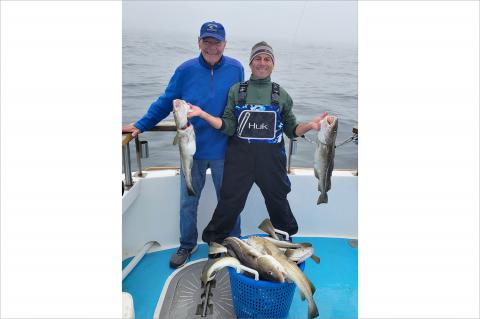Striped bass have shown up en masse in local waters, and many casters are very pleased with their early, bountiful showing. “It’s wonderful to see,” said Ken Morse at Tight Lines Tackle in Sag Harbor.
Outdoors
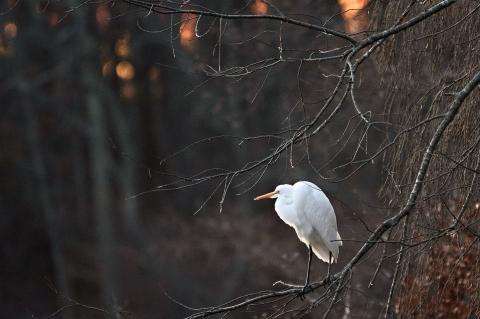 On the Wing: Where Great Egrets Go
On the Wing: Where Great Egrets GoIt’s hard to mistake the great egret: lengthy yellow bill, long black legs, large white body in between. They have sinewy necks, sometimes stretched straight, other times tucked into a squat S, as when they’re flying.
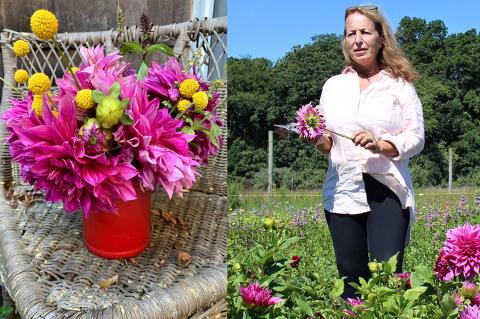 A Flower Farm Will Bloom in East Hampton
A Flower Farm Will Bloom in East HamptonThe Traceys are embarking this season on an expansion that will see them transition from their previous location, a Peconic Land Trust plot of a little under an acre behind Balsam Farm in Amagansett, to a three-acre property on Montauk Highway that was known as Bhumi Farm for a couple of years.
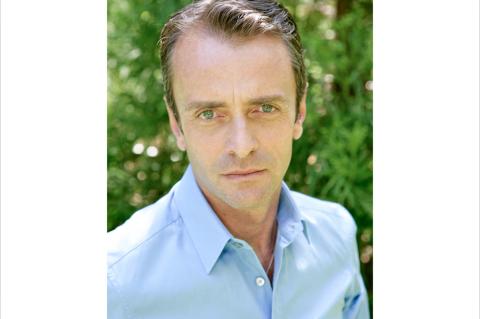 A ‘Very Personal’ Side of Garden Design
A ‘Very Personal’ Side of Garden DesignFrederico Azevedo has always been enamored with nature, flowers in particular. “As a child I would rearrange the plants for fun and plant the ingredients for my favorite foods,” he said. “The exciting thing about this medium is how it can make people happy and open up new parts of your life.” His business, Unlimited Earth Care in Bridgehampton, is celebrating a milestone this year.
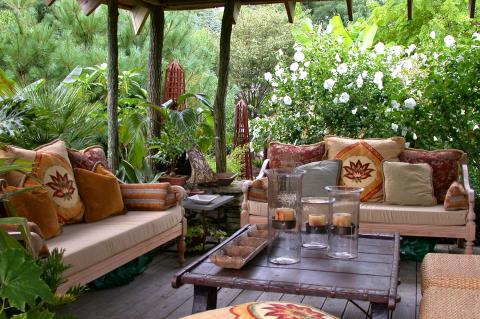 A Lush North Fork Paradise
A Lush North Fork ParadiseLet us introduce you to the Landcraft Garden Foundation, the North Fork’s fraternal obverse to Jack Lenor Larsen’s LongHouse Reserve and a paradise that Dennis Schrader and Bill Smith have been building on the North Fork since 1992.
 GIMME: Colorful, Stylish, Sustainable
GIMME: Colorful, Stylish, SustainableThe Star’s hunter-gatherer, Durell Godfrey, went looking for the kind of stuff that Mother Nature would be happy to use — and reuse whenever possible. She loves sustainability, and so will you. Shop locally and thoughtfully.
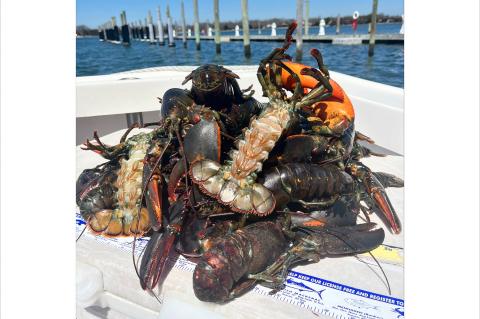 On the Water: Scratching Out a Catch
On the Water: Scratching Out a CatchThe warming rays of the sun have begun to perk up the local fishing scene, with holdover striped bass making the biggest noise in recent days.
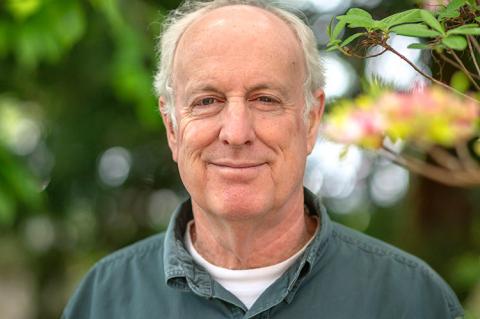 The World Wild Web
The World Wild WebDoug Tallamy, an entomologist, author, and professor at the University of Delaware, encourages homeowners to think about the role our yards play in the food chain that sustains birds and wildlife. The immense decline of the bird population by one-third over the past 50 years has opened eyes to its urgency.
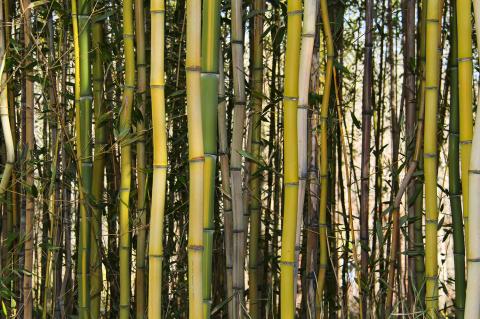 Tip Sheet: Battling Bamboo
Tip Sheet: Battling BambooAt first, I liked the bamboo. It was a comforting green wall, separating me from my neighbor’s pool. When the wind blew, it sounded like one hand clapping. At the same time, I found myself thinking, “If the revolution comes, I will dig a trench around my house and fill it with bamboo spears.”
 Veggies to the Max
Veggies to the MaxA home vegetable gardener offers some hard won advice for getting the most out of your garden along with what grows best here.
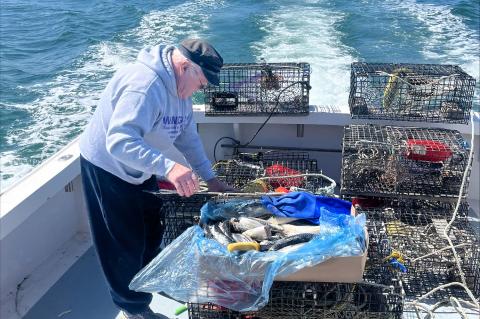 On the Water: The Lobster Traps Are In
On the Water: The Lobster Traps Are InFlounder is scarce, striped bass are not yet here in sizable numbers, so our columnist set about repairing his lobster traps.
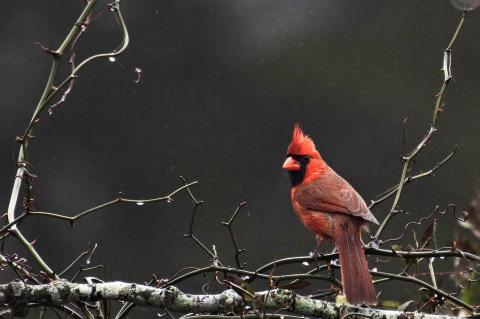 On the Wing: The Cardinal Rules
On the Wing: The Cardinal RulesCardinals, among our earliest singer each spring, are so familiar you might forget to appreciate them, but a century ago they were rare in New York.
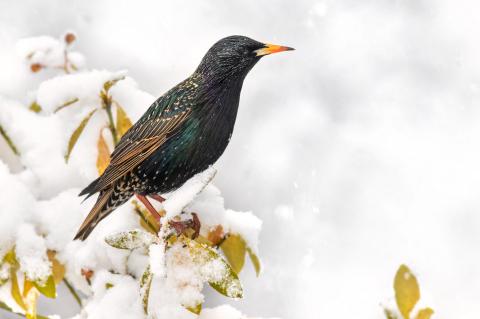 On the Wing: The ‘Hallelujah’ Bird
On the Wing: The ‘Hallelujah’ BirdI’m not sure if Leonard Cohen was into birds, but if he was, he might have appreciated the mess that is the European starling.
 On the Wing: Lost in Merganser Time
On the Wing: Lost in Merganser TimeRed-breasted mergansers rely on the open waters of our winter bays and harbors from November until April. They’ll be there if you walk anywhere along the bay side of the South Fork, between Southampton and Montauk. While they prefer salt water, they also frequent Hook Pond, Sagaponack Pond, and Georgica Pond.
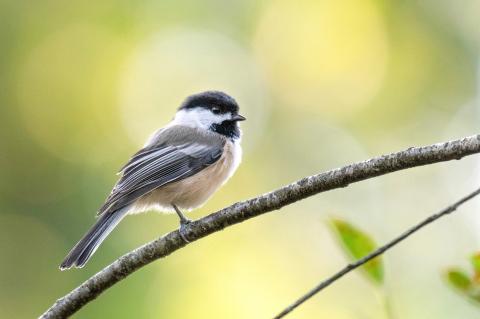 On the Wing: The Great Chickadee Search
On the Wing: The Great Chickadee SearchLooking for a walk and a challenge, I went to the Mulvihill Preserve in Noyac to hunt for wild chickadees. Hard? No. A unique reason to be in the woods? Yes. A winter activity for a winter bird.
 Thirty-One Species, 10,000 Birds Tallied in Winter Waterfowl Count
Thirty-One Species, 10,000 Birds Tallied in Winter Waterfowl CountOn Saturday, teams of birders spread out across New York State to count freshwater ducks, saltwater ducks, and geese for the annual New York State Ornithological Association waterfowl count. Locally, from Shinnecock Inlet to Montauk Point, seven groups of birders faced winds and temperatures that were stubbornly in the mid-30s to peer into our ponds, bays, and coves. They located 31 species of waterfowl for a total of 10,451 birds. More than half that number, 5,303, were the familiar Canada goose.
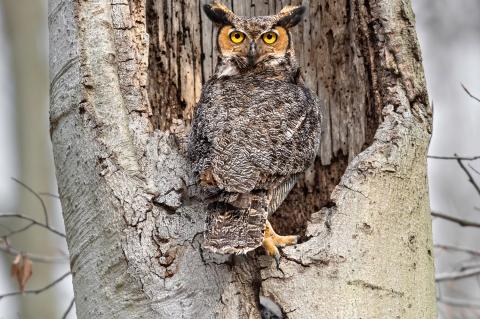 On the Wing: Hear It or Not, It’s Watching
On the Wing: Hear It or Not, It’s WatchingDuring this Christmas/New Year’s interlude, I offer a fun challenge: Take a walk in the woods at night. Try it. You may hear a great-horned owl, who, despite the cold, is starting its courtship ritual. Its classic hooting call — offered in the cadence of “Who is awake? Me too!” — can be heard for miles, the song of the blue winter night.
 On the Wing: Christmas Bird Count Merry Indeed
On the Wing: Christmas Bird Count Merry IndeedCold and wind greeted the 45 participants of the 93rd Montauk Christmas Bird Count on Saturday, but the rough conditions didn’t stop them from tallying 131 different species, the highest total for the count in the last 10 years.
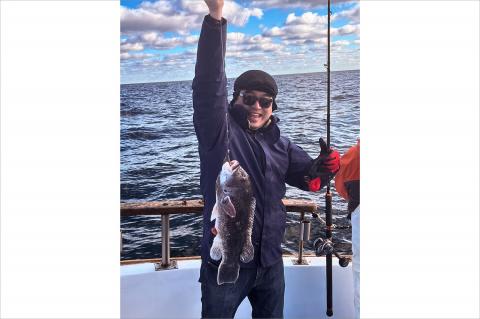 On the Water: Last Trip of 2022?
On the Water: Last Trip of 2022?To borrow a phrase from the game of baseball, the fishing season is now in the bottom of the ninth inning. Striped bass season concludes Dec. 15, blackfish season comes to an end seven days later, and Dec. 31 is the final day to retain black sea bass.
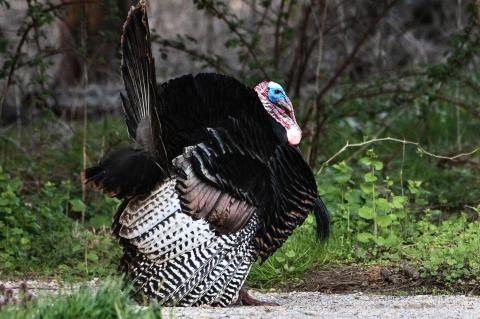 On the Wing: Turkeys, Turkeys, Everywhere
On the Wing: Turkeys, Turkeys, EverywhereIt’s hard to decouple the turkey from Thanksgiving, but long before we paired turkeys with mashed potatoes and stuffing and turned them into a national symbol, they were going about their business, hanging out in gangs, flipping leaves, and browsing the ground for nuts.
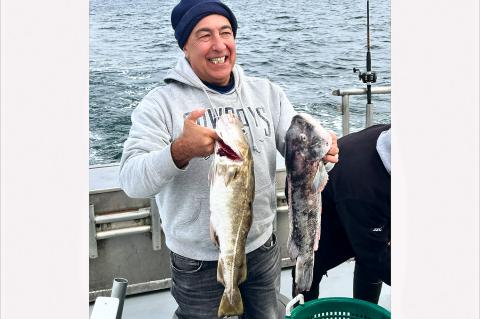 On the Water: The End Is Near
On the Water: The End Is NearAfter a mixed bag of a season, I happily climbed aboard the Elizabeth II, a charter boat out of the Montauk Marine Basin, for a trip for cod and bass, both of which I latched into within minutes.
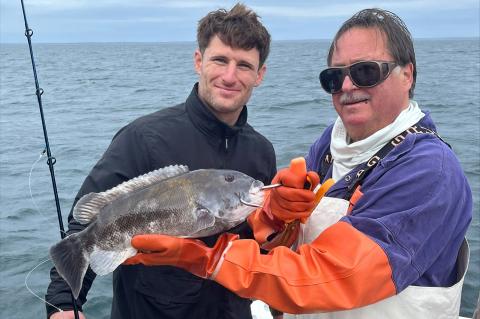 On the Water: A Return to Nomans
On the Water: A Return to NomansAbout 25 years ago, I recall jumping aboard the Viking Starship for the five-hour ride to Nomans (both the island and the area near Cuttyhunk) to target blackfish. Those trips were extremely popular, and one could retain 10 fish over 14 inches in length. Most of the time, the fishing was off-the-charts good.
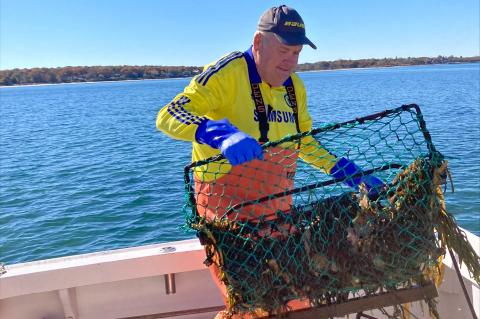 On the Water: Searching for Scallops
On the Water: Searching for ScallopsThe bay scallop season in waters under the East Hampton Town Trustees’ jurisdiction will open on Sunday at sunrise. Residents holding a town shellfish permit can continue to harvest them until sunset on March 31.
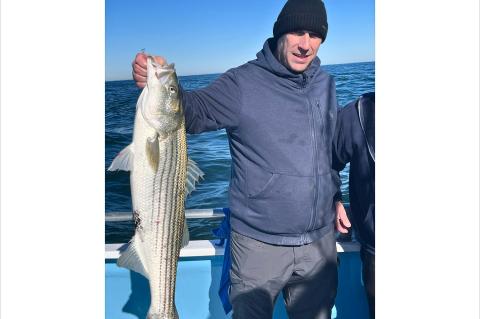 On the Water: Back on the Bones
On the Water: Back on the BonesChris Miller at Westlake Marina in Montauk confirmed that the fishing has been good on several fronts. “The bass fishing is holding up,” he said. “Sea bass too have been cooperating, but many are focused on blackfish, which has been very good since the season opened two weeks ago.”
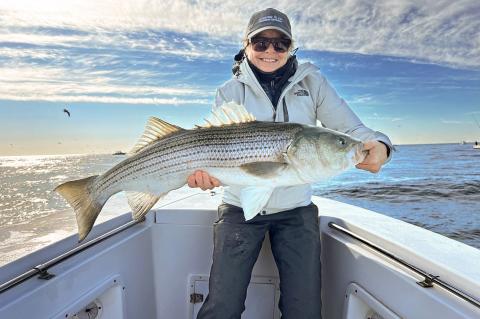 On the Water: Back Again for More
On the Water: Back Again for More"The blackfish bite has been very solid," said Ken Morse at Tight Lines Tackle in Sag Harbor. "Lots of small fish, but many are still catching their limits." Surfcasters along the ocean beaches are finding action too.
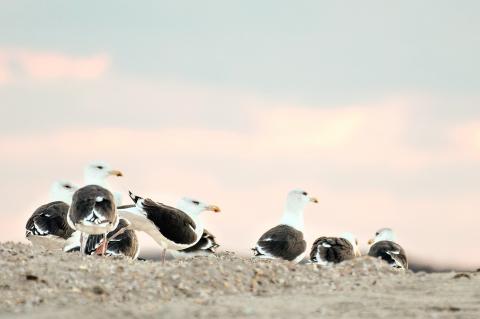 On the Wing: The State of the Birds, Good and Bad
On the Wing: The State of the Birds, Good and BadBird populations have declined steeply over the last 50 years, but the North American Bird Conservation Initiative's "State of the Birds 2022" report, published in early October, balanced the gloom with some success stories and offered strategies for future action which would "bring birds back."
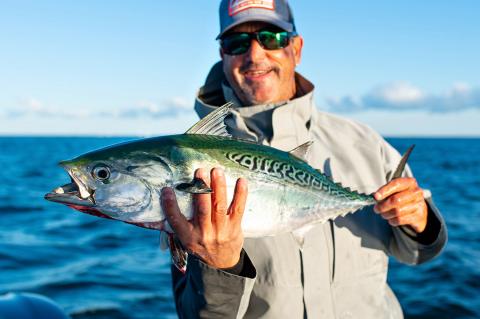 On the Water: Blackfish on the Hook
On the Water: Blackfish on the HookWhile the fishing for striped bass has been strong in Montauk, it was out of my reach, so I decided to take advantage of the sunny and windless conditions on Saturday morning for the opening of blackfish season in waters outside Long Island Sound.
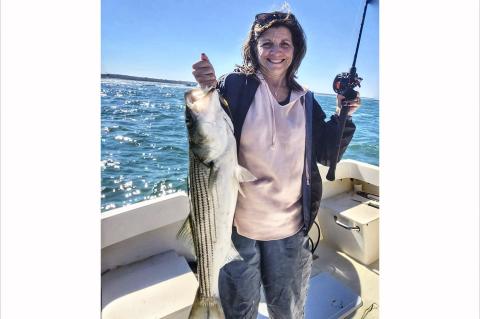 On the Water: Road Trip Cut Short
On the Water: Road Trip Cut ShortOur original 13-day vacation had already been cut short, then I tested positive for Covid. Hello to quarantine at home, which was still 420 miles away. For those not in quarantine, the fishing scene bounced back quite nicely after nearly a week of northeasterly wind and rain.
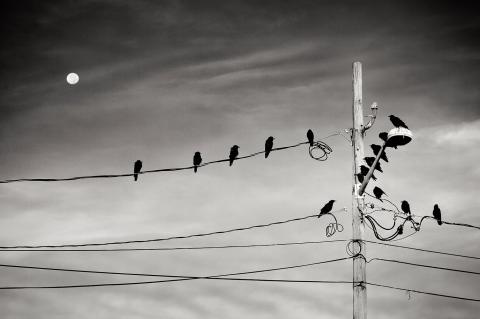 On the Wing: The Fish Crows Are Watching
On the Wing: The Fish Crows Are WatchingFirst light in Sag Harbor during autumn and the place belongs to the fish crows. They show up all at once, 100 landing in the big tree at M&T bank. As the day brightens, they spread out across the village into smaller groups. For a bird whose diet ranges from piping plover eggs to candy bars, Sag Harbor is a perfect foraging ground.
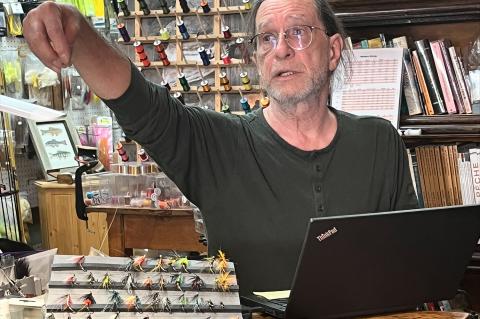 On the Water: On the Fly in Quebec
On the Water: On the Fly in QuebecThe popularity of fly-fishing exploded in Quebec when the movie “A River Runs Through It,” starring Brad Pitt, was released in 1992.
Pagination
Copyright © 1996-2024 The East Hampton Star. All rights reserved.

